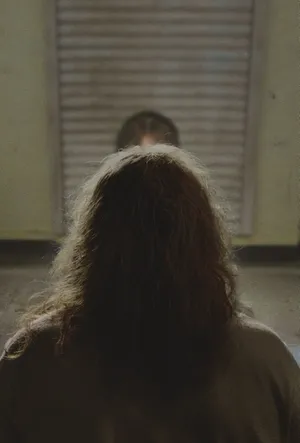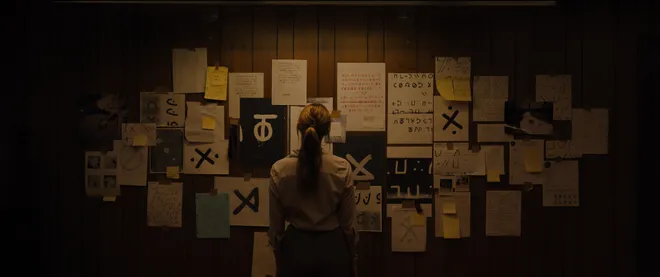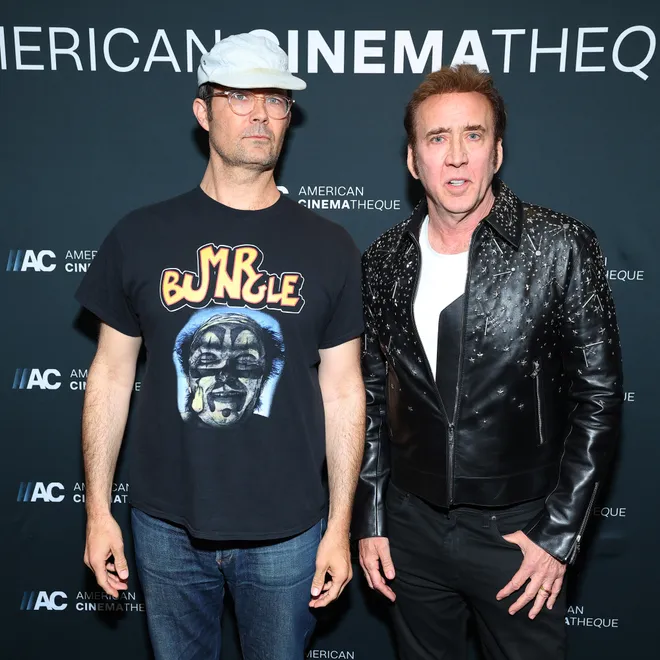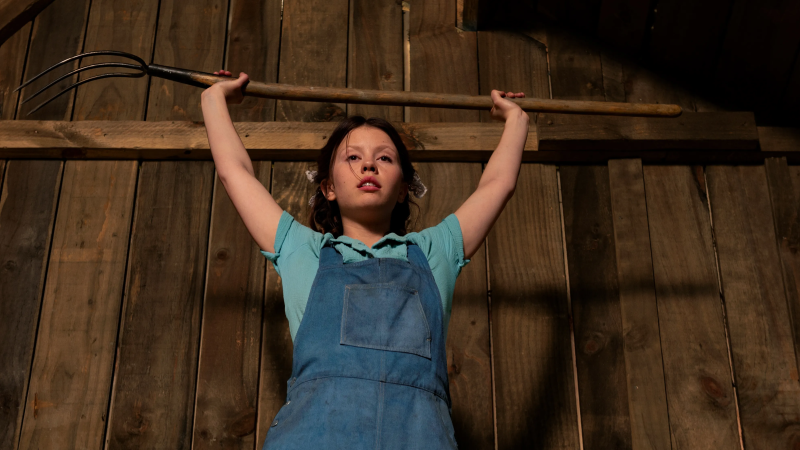Spoilers! How Nicolas Cage's mom inspired his 'Longlegs' 'boogeyman'
Spoiler alert! We're discussing important plot points in the new horror movie "Longlegs" (in theaters now), so beware if you haven't seen it yet.
When Maika Monroe first confronted co-star Nicolas Cage as his devilishly unnerving serial killer when filming a key scene in “Longlegs,” her heart raced from 76 beats per minute to a very freaked-out 170. When director Osgood Perkins’ daughter Bea got to meet Longlegs up close and personal, she took it like a teen.
“When you're 14, you can go either way: You're either really daunted or you just don't give a (expletive),” says Perkins, whose daughter has a small role in the film as a hardware-store clerk annoyed by the villain’s odd mannerisms. “She was very not overawed, which I thought was delightful.”
Most people witnessing Cage’s terrifyingly discomforting performance will be creeped out. Under a massive amount of facial prosthetics and wielding a strangely pitched, sing-songy voice (think Tiny Tim from hell), the Oscar winner plays Longlegs as an androgynous dollmaker really into Satan and T. Rex.
Join our Watch Party!Sign up to receive USA TODAY's movie and TV recommendations right in your inbox
Need a break? Play the USA TODAY Daily Crossword Puzzle.
Nicolas Cage lives up to his 'boogeyman' role in 'Longlegs'

“Longlegs" is a 1990s-set chiller starring Monroe as young FBI agent Lee Harker. She gets assigned the case of a father who killed his family and then himself, but a cipher found at the scene (with the name "Longlegs" attached) points to the real culprit being a serial killer who's been leaving occult calling cards for three decades.
Perkins first envisioned Longlegs as “this shifty, dirty, greasy guy” who would show up at a kids' birthday party as a clown or perhaps a puppeteer. “When I settled into making a serial-killer movie that was going to ape ‘Silence of the Lambs,’ I knew I was going to need a monster,” explains the director, son of “Psycho” horror legend Anthony Perkins.
The antagonist symbolizes the movie’s exploration of innocence lost. “He's the boogeyman, but he's also just a gross man,” Perkins adds. “There's both the magic and the horror of the thing that seems like it's sort of infinitely powerful, whether you call it the devil or death or evil. And then of course, when you see him ultimately unadorned, you realize he's just a really gutted husk of a person, gross and ‘busted’ as the kids say.”
'Longlegs' director Osgood Perkins sees his villain like a 'shark'

With much of Longlegs’ creation, Perkins tried to stay open to “the muse,” he says. “You're like a narrative doula. You just let it happen and you encourage it to come out.” Because Perkins was going through a T. Rex phase while writing the movie, a Marc Bolan lyric from “Bang a Gong (Get It On”) (“You’ve got the teeth of the hydra upon you”) informed the plot and also appears at the beginning of the film. Even the name Longlegs randomly popped into Perkins’ head one day: It sounded "like a Led Zeppelin song, something Robert Plant would've sung about or someone would've written on the side of their van.”
As for the character, Perkins let Cage be Cage. The actor patterned Longlegs’ hand movements, higher-pitched voice and penchant for saying “cuckoo” on Cage's own mother, Joy Vogelsang: “She did a lot of things to freak him out” when Cage was a boy, Perkins reports. "He harvested a lot of memory of his mom."
The director has kept his and Cage’s villain a mystery, with limited views in film stills and trailers, and Longlegs isn’t even seen in full until well into the movie. “We treated him like a shark,” Perkins says, having him pop out for a bit from the darkness every so often. The filmmaker was interested in “the duality between the all-powerful unseen hand, the Wizard of Oz behind the curtain, that's messing everybody up, and then in the light of day, it's extremely vulnerable and human.”
Nicolas Cage channels Lon Chaney for his character's 'big flourish'

Longlegs’ big scene where viewers – and Lee – see him in all his grimy glory is basically his last: He doesn’t make it to the film’s ending, where it’s revealed that he makes the dolls that possess dads to do bad things but it’s Lee’s ultra-religious mom (Alicia Witt) who delivers these dark objects and makes sure the murders are carried out.
It's a chilling moment when Lee confronts Longlegs in an interrogation room. He moves around like a whirling dervish in his seat (another bit Cage took from his mom, Perkins says), and after stating, “Hail Satan,” Longlegs violently bashes his face into the table repeatedly until he’s a bloody, gruesome mess and dies on the spot.

“It was the self-immolation, the almost ritualized suicide that requires all of your energy and focus. So he goes out with a big flourish,” Perkins says. “The movie is populated with these wildly baroque moments that are supposed to be nearly too much or sometimes too much too much."
The death scene is also reminiscent of the infamous moment when Lon Chaney's mask is taken off in “Phantom of the Opera” – you can even see the bone underneath his skin when Longlegs is finished. “We're borrowing from the classics, for sure. It’s all in the soup,” says Perkins, who discussed Chaney’s capturing “expressiveness” with Cage. “And if you start talking enough about Lon Cheney, then you end up with a Lon Cheney thing.”
Disclaimer: The copyright of this article belongs to the original author. Reposting this article is solely for the purpose of information dissemination and does not constitute any investment advice. If there is any infringement, please contact us immediately. We will make corrections or deletions as necessary. Thank you.







